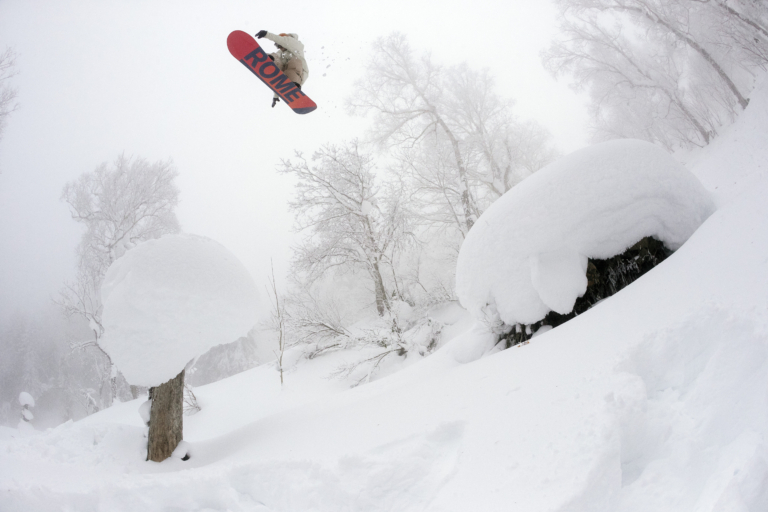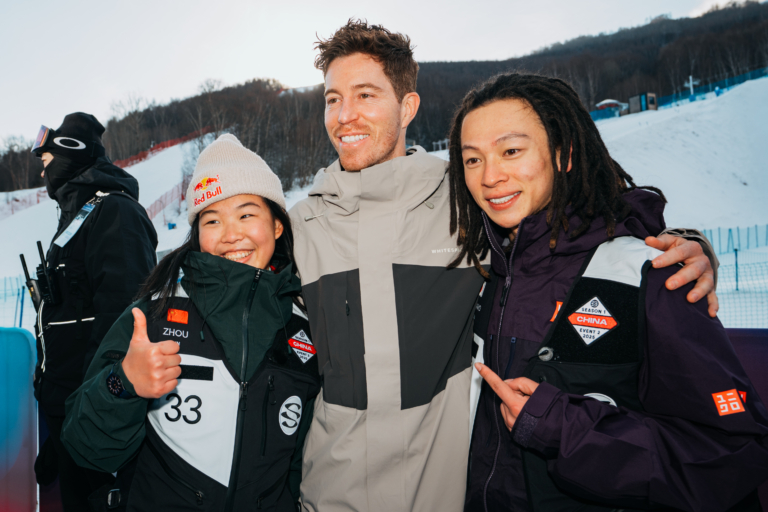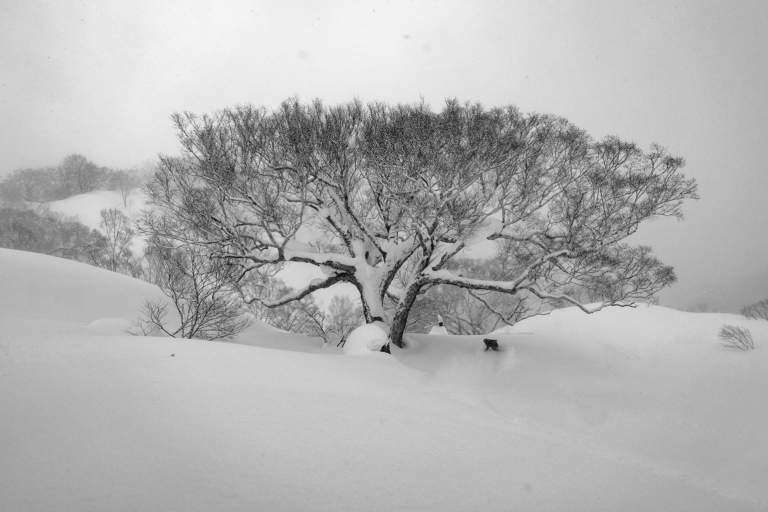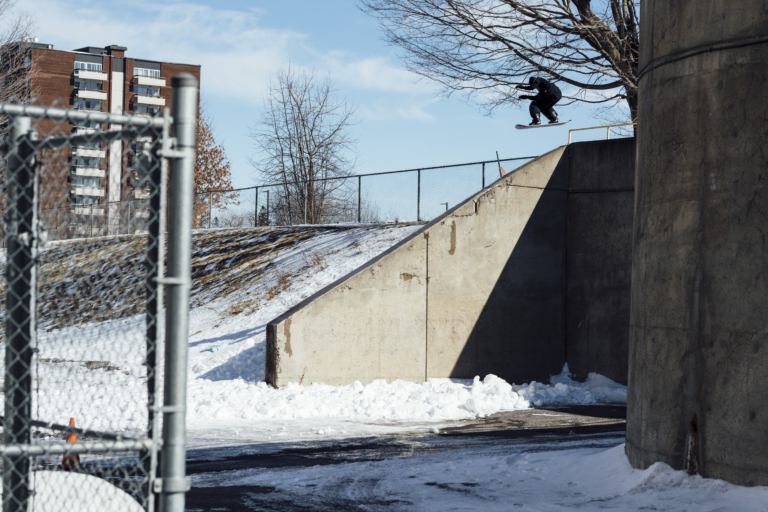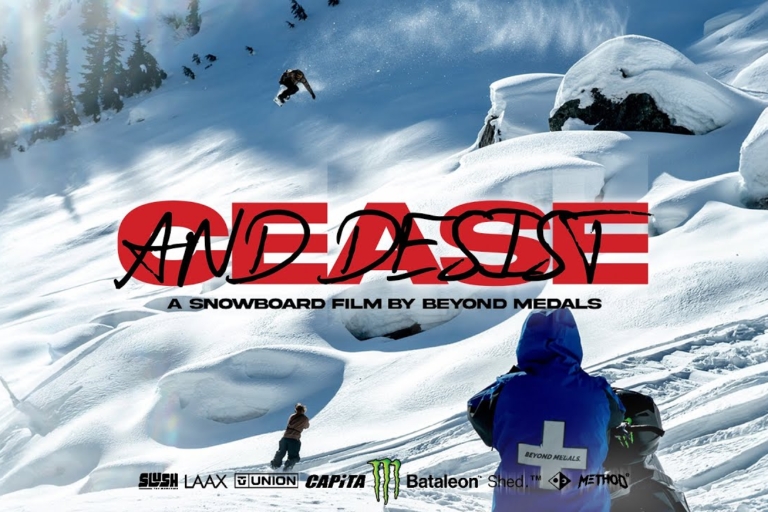
Words: Tricia Byrnes
Originally featured in Snowboard Mag Vol. 10, Issue 4 | The Olympic Issue
Waving red, white and blue American flags with unkempt hair poking out from beneath cockeyed blue berets, a slightly disheveled gaggle of snowboarders disguised as Olympians marched into the Olympic stadium with hopes of bringing snowboarding’s spirit to the Olympic stage; and I was one of them. We were not the wide-eyed rookies who’d stumbled into Nagano four years earlier completely unaware of the Olympic machine and its ability to chew you up and spit you out. We’d seen the fallout of a premature entry into the Games and had battled uneducated media asking questions about ski-boarding, pot smoking and “wacky” hairdos. We’d already settled our internal debates about whether we were for or against snowboarding becoming part of the Olympics, and those of us who were for it were ready to be Olympians. But we wanted to do it our way.
Unlike our Olympic counterparts, we were not the training-from-the-womb, 12-person-entourage figure skater types or the ultra-serious, measure-your-food-and-caloric-output speed skater types. We were snowboarders, rough around the media-trained edges and following a lifestyle of fun all the way to the biggest sporting event in the world types. We were the new kids on the Olympic block, and the Olympic circus didn’t define us. And we had plans to keep it that way.
[juicebox gallery_id=”42″]
As we strolled into the stadium on that frosty Salt Lake City night in February 2002, before Kelly Clark would win the first Olympic gold medal of those Games and Ross Powers, Danny Kass and JJ Thomas would sweep the men’s halfpipe podium, and years before Shaun White would become a household name, we waved our little flags and smiled our mischievous smiles. We were determined to bring snowboarding’s spirit to the Olympic stage and change what it meant to be an Olympian.
Now, nearly a decade and a half later, we’ve risen from Olympic obscurity to the main stage of Olympic coverage. Our hairdos (or Shaun’s) still receive international press, and based on the private pipes and coaches, celebrity trainers, and lucrative Olympic deals being signed by this generation of riders, I can’t help but wonder if we’ve changed the Olympics, or if the Olympics changed us?
Also see: The Olympic Issue: Terje Haakonsen Interview
In those early days of our Olympic history we were shred homies hiking the same halfpipes, spurring each other on to push ourselves and the sport. This is not to say that there were no great rivalries or that we weren’t fierce competitors. Like any sport, intense rivalries and cutthroat competition drove and shaped our sport from the very beginning. Jake Burton Carpenter and Tom Sims’ east coast vs. west coast rivalry and the racing vs. freestyle battles gave birth to our biggest contests and cultivated young talent. But in those early days there were no real regional or national borders dividing competitors. We were snowboarders. That was our nation and we were pulling and pushing each other for the betterment and growth of our sport.

Now, each rider is an island unto themselves with private coaches, personal trainers, managers and a full support crew invested in a single rider’s results. They’re still pushing each other and progressing the sport, but in an isolated, undisclosed private location that will be turned into a fully branded web edit when the marketing department deems the time is right.
But can we blame them? The Olympics is a lucrative business with sponsorship dollars, national team funding and fame all on the line for one moment every four years. The medal count isn’t simply some fun national bragging rights contest but how most nations decide which programs receive funding and which programs do not. Those medals fund the future of competitive snowboarding (and help push the sport).
In those early days of our Olympic history we were shred homies hiking the same halfpipes, spurring each other on to push ourselves and the sport. This is not to say that there were no great rivalries or that we weren’t fierce competitors. Like any sport, intense rivalries and cutthroat competition drove and shaped our sport from the very beginning. Jake Burton Carpenter and Tom Sims’ east coast vs. west coast rivalry and the racing vs. freestyle battles gave birth to our biggest contests and cultivated young talent. But in those early days there were no real regional or national borders dividing competitors. We were snowboarders. That was our nation and we were pulling and pushing each other for the betterment and growth of our sport.
As the level of riding continues to grow, it takes more time, effort, energy, courage and resources to push past the fear and risk everything to land next-level tricks. So the riders of today better damn well be in the best physical shape of their lives with access to perfect halfpipes and off-hill training facilities to ensure their safety.
With the advent of 22 ft. halfpipes, the Olympic standard, we’ve increased the progression and power of our sport. Riders are going bigger, spinning more than ever and double corking on nearly every hit. Back-to-back-to-back double corks and 1080s, 1260s and 1440s demand a trained eye to appreciate and decipher the nuances between them. As amazing as this progression is, I can’t help but fear for a future similar to that of aerial skiing where the world tunes in every four years and thinks, “What in the hell was that?”

And it’s hard not to notice that the halfpipes themselves are dwindling in number. In 2002, nearly every resort in the US had a halfpipe (albeit an 18-footer). In 2014, that number has dwindled to ten 22 ft. halfpipes worldwide. That sounds a little bit like the fate of luge and bobsled, where the only tracks that exist are in previous Olympic cities. Not to mention these 22 ft. beasts are almost impossible for the average shredder to ride, making halfpipe riders the on-hill minority.
So as more money pours into our sport, our newfound love of celebrity increases and as we progress our riding to nearly un-relatable, superhuman levels we’re beginning to look a lot like those 12-person-entourage, caloric-measuring Olympians who are born to shred.
This year we will see the first generation of Olympic riders who have never known a world where snowboarding and the Olympics weren’t one and the same. Riders like 15-year-old Japanese wonder child Ayumu Hirano and 17-year-old Arielle Gold will not only be rookies to the Olympic process, but they only know a world where snowboarding ebbs and flows in four-year cycles.
Maybe all these changes aren’t such a bad thing. Maybe these are just the growing pains of any sport as it comes of age within the Olympic space. Perhaps those figure skaters and lugers started out just as wide-eyed and free-spirited as we did, hoping to push themselves and their sport to the next level. If we measure the Olympics’ impact on snowboarding in terms of progression and growth, then the Olympics has been nothing short of amazing for us. In 1998, the winning men’s run — or runs since snowboarding operated on a ski-racing model of two runs combined — was a handful of straight airs and back-to-back 720s. This year’s winner will have no fewer than three double corks. Straight airs have been all but eliminated, those 720s are nearly non-existent and women are landing1080s. Each Olympic cycle breeds greater progression, as that giant Olympic flame is lit under each hopeful’s ass. In July 2009, Louie Vito landed the first double cork at the Burton New Zealand Open halfpipe competition, and six months later at the Vancouver Olympics not a single rider in the field competed without one. This season will be no different.

Perhaps it’s this success and fierce drive to push the envelope that has made the Olympics want more of what we’ve got, adding slopestyle and the snowboard inspired freeskiing events to the Olympic roster. Maybe it’s our Flying Tomato ratings or maybe, just maybe, it is the spirit of snowboarding that has cracked open the Olympic doors. Whatever it may be, I’m excited to sit back and watch the biggest pack of shredders yet march into Sochi’s Olympic stadium waving their nation’s flag in their matching whack-a-doodle Olympic outfits and continue to define what it means to be a snowboarder and an Olympian. Let the Games begin.
More Olympic Content:
Sage Kotsenburg takes home Slopestyle Gold at Sochi 2014 Olympics, Sandbech & McMorris stomp Silver, Bronze
My Dream: Slopestyle makes its Olympic debut
A coach’s perspective on the Olympic Games: an interview with Ricky Bowers
Jamie Anderson wins Slope Gold in Sochi, Enni Rukajarvi & Jenny Jones take Silver, Bronze

